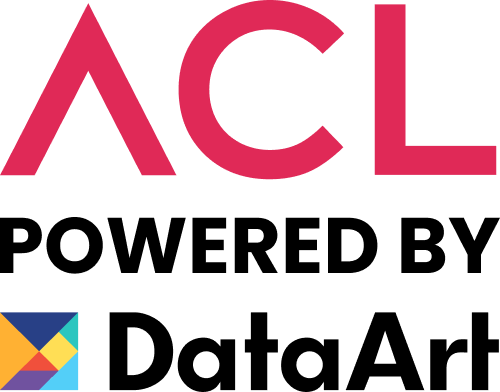Agile Nearshoring is not your typical fancy buzzword. On the contrary, considering that 61% of companies use the Agile methodology to achieve both software development and company-wide digital transformation this is a strategic solution for businesses looking to scale and innovate in 2024.
Now, when you combine this approach with the talent of LATAM developers, your business can unlock a realm of possibilities. There are many benefits to Agile Nearshoring, from cost-effectiveness to enhanced collaboration thanks to favorable time zone overlaps. That’s why in this article, we'll explore what Agile nearshoring really means and why you should use this methodology to hire developers in Latin America. Whether you're considering nearshoring for the first time or looking to refine your approach, this post lays the foundation for a successful Agile nearshore software development experience.
What Is Agile Nearshoring?
Agile nearshoring consists of outsourcing development projects to nearby countries, rather than far-off regions, allowing for more synchronized collaboration, while using the Agile Methodology. This strategy is gaining traction for the way it’s revolutionizing the way businesses approach nearshore software development. It gives companies the ability to combine the cost-saving benefits of traditional outsourcing practices with the agility and communication ease one sees in in-house teams.
One of the standout advantages of Agile Nearshoring is the alignment of time zones. When you work with teams in nearby regions - LATAM in the case of North America - you're more likely to share business hours. This overlap means real-time communication, quicker responses, and more efficient problem-solving. It's a true game-changer for projects requiring frequent updates and collaborative input. Cost efficiency is another major plus, as hiring developers from LATAM often results in significant savings compared to local hires, without compromising on quality. Now, cultural alignment is an often-overlooked benefit. LATAM's cultural similarities with North American and European markets mean fewer issues in communication and work ethics. This alignment leads to smoother project management and a better understanding of end-user expectations.
Agile methodologies, with their emphasis on flexibility and adaptability, are perfectly suited for companies looking to hire LATAM developers. They allow for regular feedback loops and iterative development, ensuring that the project evolves in line with your vision and market demands. With Agile, you're not just outsourcing work - you're creating a collaborative partnership with nearshore developers that fosters innovation and rapid development. All in all, Agile nearshoring strikes a balance between cost, quality, and convenience. By choosing LATAM for your development needs, your business can tap into a rich group of talent and expertise, all while enjoying the benefits of geographic and cultural proximity.
How To Evaluate Your Needs for Agile Nearshore Development
Before deciding to use the Agile methodology for your nearshore software development projects, it's important to evaluate your specific needs. That’s why the following section is dedicated to guiding you through the essential steps of assessing what your project requires from a nearshore development team. Think of it as laying the groundwork for a successful partnership. You'll have a clearer picture of what to look for in a nearshore development team. This isn't just about filling the US’s tech talent gap; it's about finding a team that will seamlessly integrate with your operations and contribute to your project's success.
1. Identify Necessary Project Requirements
Identifying the specific requirements for your Agile project is a critical first step in the nearshoring journey. It’s not just about knowing what you need to get done but understanding the depth of the skills and expertise required to achieve your project goals. This process should start by mapping out the scope of your project. Consider whether your company is developing a new software product, enhancing an existing one, or solving specific tech challenges - perhaps even something entirely different. Each development project demands different skills and experiences.
Next, consider the technical skills essential for your project. This goes beyond just programming languages. Think about the frameworks, tools, and environments your team will need to be proficient in. For Agile teams, familiarity with Agile methodologies, tools for version control, continuous integration, and testing frameworks is typically crucial. Lastly, team dynamics are just as important. Agile projects thrive on collaboration, so you’ll want team members who are not just technically adept but also strong communicators and team players. They should be comfortable with Agile practices like daily stand-ups, sprint planning, and retrospectives.
2. Assess Cultural and Time Zone Compatibility
When considering Agile nearshoring, assessing cultural and time zone compatibility is crucial - as it’s one of the main advantages of this nearshoring strategy over offshore development. This time zone overlap facilitates real-time collaboration, quicker decision-making, and more agile responses to project changes. It’s not just about finding LATAM developers with the right technical skills You need an outsourced development team that aligns with your organization's work culture and operates within a compatible time zone.
Cultural compatibility also plays a huge role in the success of nearshore projects. When your team shares similar work ethics, communication styles, and business practices, collaboration becomes smoother. For instance, many LATAM countries have work cultures that closely align with those in North America and Europe, which can lead to more efficient and effective teamwork.
Now, we understand that assessing these factors involves some research. It’s best to look into the typical workday, LATAM’s national holidays, and general work culture in your potential nearshore location. Understanding these elements will help you anticipate and plan for any adjustments in your project management approach.
3. Think About Your Project Budget
Understanding the financial aspects of your project can help you make informed decisions and ensure a good return on investment when you hire LATAM developers for Agile nearshoring. First, consider how much your company will have to spend on this project. Then, assess the value your ideal team brings in terms of expertise, experience, and efficiency. Take into account the total cost of engagement, not just hourly rates. This includes any additional expenses such as setup costs, communication tools, and potential travel expenses for on-site visits or team integration activities.
Also, consider the flexibility of scaling the team. Agile projects can evolve, requiring different skill sets at different stages. Nearshore teams that offer scalable solutions can be more cost-effective as you can adjust the team size based on project requirements, without the need for long-term commitments. Remember, the goal is to find the right balance between cost, quality, and value. A well-chosen nearshore Agile team should not only fit within your budget but also contribute to the overall success and profitability of your project. By carefully considering and sticking to your budget, you can ensure a cost-effective and productive nearshore hiring strategy.
Building and Managing Your Agile Nearshore Team
Knowing how to properly build and manage your Agile nearshore team is a crucial step in leveraging the full potential of this software development strategy. In this section, we'll guide you through the key aspects of assembling and leading a high-performing, nearshore Agile team. From selecting the right members to establishing effective communication channels, you’ll gain insights into creating a cohesive and productive team.
1. Look for the right agile development skills
When looking for Agile LATAM developers, focusing on the right mix of skills and qualifications is key. Technical qualifications might be the priority, but you also need individuals who excel in the Agile environment. Here's what to keep an eye out for to ensure you hire top talent:
- Technical Expertise: Look for developers with a strong command of programming languages relevant to your project, like JavaScript, Python, or Ruby. Experience with frameworks and tools commonly used in Agile development, such as React or Angular for front-end development, is also crucial.
- Agile Experience: Candidates should have a solid understanding of Agile methodologies, like Scrum or Kanban. Experience in an Agile setting, evidenced by past projects or roles, indicates they can thrive in a fast-paced, iterative development environment.
- Soft Skills: Agile development is highly collaborative, so strong communication skills are a must. Look for developers who are adept at articulating their ideas clearly and can effectively collaborate with team members across different functions.
- Problem-Solving Ability: Agile projects often involve rapidly changing requirements and quick decision-making. Developers with strong analytical and problem-solving skills can navigate these challenges effectively.
- Adaptability and Continuous Learning: The tech landscape is ever-evolving. Developers who demonstrate a commitment to continuous learning and adaptability are more likely to keep up with the latest technologies and methodologies.
- Cultural Fit: Given the collaborative nature of Agile teams, it’s important that the developers you choose align well with your company's culture. This alignment ensures smoother integration with your in-house staff and better team dynamics.
2. Ensure Effective Remote Agile Collaboration
Ensuring effective remote Agile collaboration in a nearshore setting hinges on several key factors. The most critical is establishing and maintaining open lines of communication. With team members dispersed across various locations, leveraging technology to stay connected is vital. Remote work tools like Slack, Microsoft Teams, or Zoom can simulate the face-to-face interaction essential for Agile teamwork. Just remember building a culture of trust is equally important. Encourage autonomy and empower team members to make decisions relevant to their work. This autonomy fosters a sense of ownership and responsibility, crucial for Agile teams' success.
Now, regular meetings are the lifeblood of Agile processes, and in a remote context, these should be conducted with even greater rigor. Daily stand-ups via video calls, sprint planning, and retrospectives are non-negotiable. They ensure that everyone is aligned on tasks, goals, and any emerging issues. Keep these meetings concise and focused to respect everyone's time, especially considering different time zones.
Lastly, clear and transparent documentation is another pillar of effective remote collaboration. Platforms like Confluence or shared Google Docs allow for real-time updates and access to important project information. This transparency ensures that every team member, irrespective of their location, has the latest information at their fingertips.
3. Prevent communication barriers with multicultural teams
Overcoming communication barriers in multicultural teams is essential for successful Agile Nearshoring. Here are some effective strategies to avoid any communication issues when you hire LATAM developers:
- Language Proficiency: Ensure team members have a competent level of English, or consider language training to bridge gaps. Clear communication is fundamental in Agile processes.
- Cultural Awareness Training: Provide training on cultural awareness. Understanding different cultural backgrounds and communication styles helps avoid misunderstandings and fosters mutual respect.
- Use of Clear, Simple Language: Avoid jargon, idioms, or colloquialisms that might be confusing. Opt for simple, clear language to ensure everyone is on the same page.
- Regular Feedback Sessions: Implement regular feedback sessions. These sessions provide opportunities to address any communication issues and improve team dynamics.
- Visual Aids and Documentation: Use visual aids and thorough documentation. Diagrams, flowcharts, and well-documented processes can transcend language barriers.
- Time Zone Awareness: Be mindful of time zones when scheduling meetings to ensure all team members can participate without undue inconvenience.
- Encourage Active Listening: Promote active listening within the team. Encouraging team members to repeat or summarize what they have heard can clarify misunderstandings immediately.
Leveraging Agile Methodologies in Nearshore Development
Leveraging Agile methodologies in nearshore development will allow you to adapt and implement Agile practices in a nearshore setting, ensuring your project benefits from the best of both worlds. Embracing Agile methodologies when you hire LATAM developers can lead to enhanced collaboration, faster project turnaround, and superior end results. This section is all about making Agile work for your nearshore development team!
1. Adapt Agile Frameworks for Your Remote Development Team
Adapting Agile frameworks for remote teams requires a tailored approach to maintain efficiency and collaboration. When your team is not physically co-located, certain Agile practices need to be modified for the remote environment. Communication is the cornerstone of Agile, and with remote teams, it becomes even more crucial. Utilize digital communication tools effectively to maintain constant and clear communication. As we mentioned, tools like Slack for instant messaging, Zoom for video conferencing, and Jira for project tracking can replicate the immediacy of in-person interactions.
As for regular best practices, the Agile practice of daily stand-ups is vital. For remote teams, these should be conducted via video calls at a time that suits all time zones involved. This daily touchpoint helps keep the team aligned and focused on the day’s priorities. Sprint planning and retrospectives are also key Agile practices that should be adapted for remote teams. Have your nearshore developers use collaborative online tools like Miro or Trello during these meetings to facilitate brainstorming and planning. Ensure every team member has the opportunity to contribute, respecting the challenges that come with different time zones - no matter how minimal that clash in alignments is with nearshoring.
2. Prioritize Sprints and Scrum Meetings
The concept of Agile 'sprints' remains just as relevant when working with remote developers but with added flexibility. Recognize that remote teams might need different sprint lengths to accommodate varying work patterns or time zones. This flexibility allows teams to maintain productivity without burnout. In a remote setting, the role of the Scrum Master or Agile Coach becomes even more critical. They must not only facilitate meetings and processes but also ensure that team members feel connected and valued, regardless of their physical location.
Scrum meetings, including daily stand-ups, sprint planning, and retrospectives, are vital for keeping the team on track. For these meetings to be effective across borders, use video conferencing tools to facilitate face-to-face interaction. This helps in building rapport and ensuring clear communication. The timing of these Scrum meetings is also crucial, so pick a time that works for all team members across different regions This might mean compromising on ideal times, but it ensures maximum participation. In cases where this isn’t feasible, consider recording meetings for those who can’t attend live, ensuring they stay in the loop.
In these meetings, keep the focus sharp and the duration short. The daily stand-up, for instance, should not last more than 15 minutes. This keeps the team focused on essential updates without taking up too much of their working day. Finally, adapt the Scrum artifacts – like product backlogs and sprint boards – for remote access. Use online project management tools where team members can update their progress in real-time, ensuring transparency and continuous alignment with project goals.
3. Ensure Continuous Integration and Delivery
Implementing traditional Agile practices like Continuous Integration (CI) and Continuous Delivery (CD) in a nearshore Agile setting is crucial for maintaining a high pace of development and ensuring quality. These practices are key to managing a distributed development process efficiently.
Continuous Integration involves merging all developers' working copies to a shared mainline several times a day. In a nearshore setup, this practice reduces the complexities of integrating code from a diverse team spread across different locations. Utilizing CI tools like Jenkins, CircleCI, or Travis CI can help automate the build and testing processes, ensuring that new code changes do not break the software. For CI to be effective, emphasize writing comprehensive, automated tests. Given the geographical spread of the team, automated testing becomes essential for maintaining code quality and speeding up the development process, and should cover as much of the codebase as possible to catch issues early.
Continuous Delivery extends CI by ensuring that the code can be deployed to production at any time. In nearshore settings, CD helps streamline the release process, allowing teams to deliver updates to customers rapidly and reliably. Tools like Docker and Kubernetes can be instrumental in automating the deployment process, making it faster and reducing human error. However, CI/CD in a nearshore context also means being mindful of the deployment schedule and its impact on different markets. Release timing should be planned considering the end-users in various time zones to minimize disruption.
Looking to Hire LATAM Developers for Agile Nearshoring Projects?
At ACL, we guarantee the success of your software development projects by assisting you in recruiting top-tier nearshore developers from Latin America. This is achieved through our staff augmentation and nearshore outsourcing services. Our skilled technical recruiters are dedicated to sourcing and selecting the finest LATAM talent for your development needs, managing all aspects from initial vetting to interviewing. Whether your Agile nearshoring project needs a large outsourced development team or a single specialized hire, our experienced team is ready to help you integrate the ideal candidates into your workforce.
Reach out to us now to schedule a free discovery call and explore more about how we can help you hire LATAM development!






